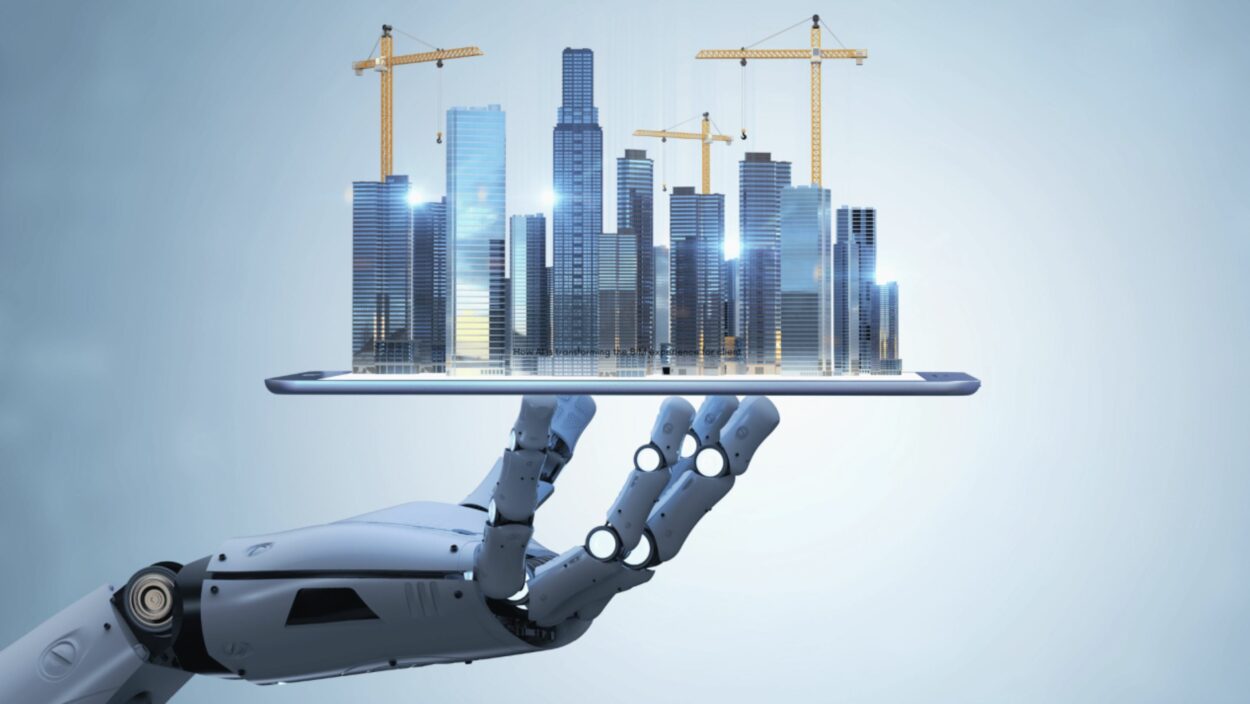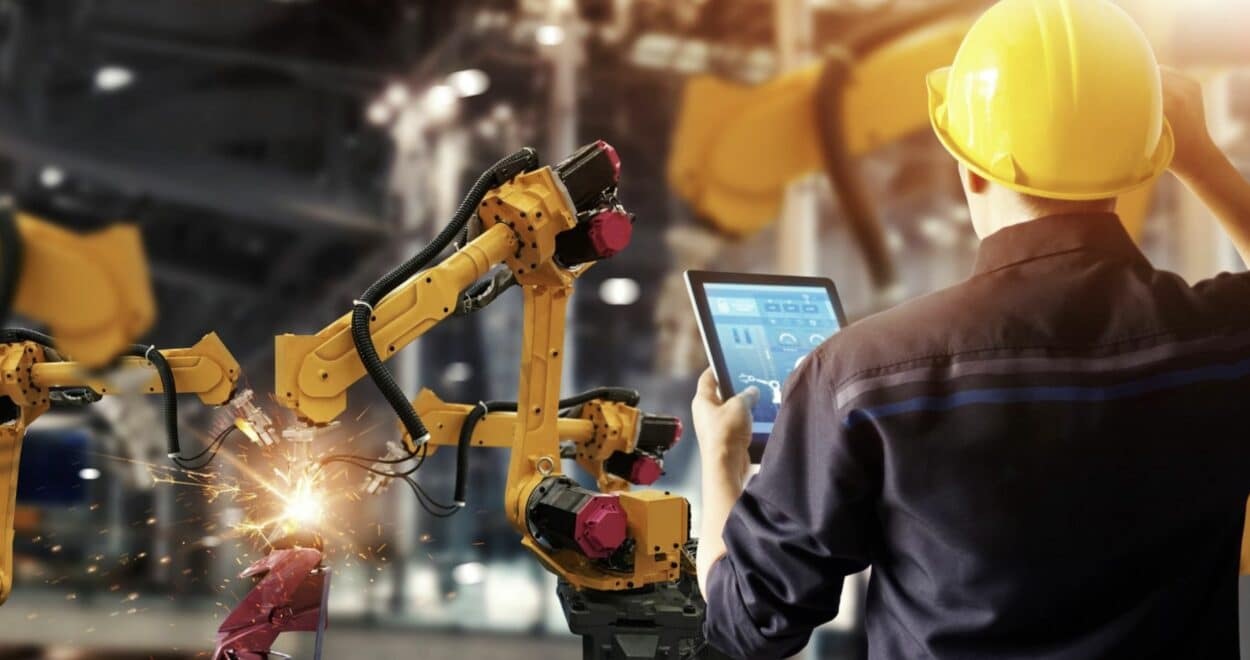The integration of Artificial Intelligence (AI) is revolutionizing Building Information Modeling (BIM) in the construction industry, addressing challenges and unlocking new creative possibilities.
Building Information Modeling (BIM) has been at the forefront of construction innovation since the early 2000s. This approach to project management has significantly improved efficiency, communication, and overall productivity in the industry. Now, with the integration of Artificial Intelligence (AI), BIM is poised for a transformative leap forward. Yet there remain challenges to consider In this article, we explore the latest developments in the fusion of AI and BIM and how this synergy is revolutionizing the construction sector.
AI-Infused Advancements in BIM
AI is making remarkable strides in various aspects of BIM, with applications in clash detection, building energy simulation, cost estimation, quality control, and schedule optimization. In clash detection, AI automates the identification of conflicts or collisions between different elements of a building’s design. Algorithms analyze 3D models and pinpoint clashes, allowing architects and engineers to make necessary corrections swiftly. As David Lee, co-founder, and CEO of FAME Architecture & Design, BIM expert, explained in an interview with ArchiExpo e-Magazine:
“Previously, with BIM software, there was more focus on the program’s internal rendering capabilities, but now that has switched to ensuring that other software can plug into it.”
Another critical application is the simulation and optimization of a building’s energy performance. AI algorithms consider factors like building orientation, envelope design, and HVAC systems to determine the most energy-efficient design. These simulations empower architects and engineers to make informed decisions about building design, promoting sustainability.
AI-driven cost estimation is a game-changer, with algorithms analyzing data such as building materials and labor costs to generate precise estimates. Additionally, AI enhances quality control by analyzing sensor data to detect anomalies and sending alerts to prevent potential issues.
For schedule optimization, AI algorithms analyze construction site layouts, equipment availability, and labor schedules to generate efficient construction schedules.
Software Integration and Augmented Reality (AR)
One of the critical cornerstones of AI-enhanced BIM’s success is its seamless integration with other rendering and 3D-modeling software programs. This transformative trend, as highlighted by Lee, is pivotal for streamlining architectural and design work. BIM, when thoughtfully integrated, serves as a common platform, transcending boundaries and linguistic differences in data exchange and utilization.
But the innovation doesn’t stop there. Augmented Reality (AR) has emerged as a powerful tool within the realm of construction, further enhancing BIM’s capabilities. When harmoniously combined with 3D modeling software and BIM, AR transcends the conventional, enabling architects and designers to create precise, interactive structure models that immerse clients in a lifelike representation of their future buildings.
The applications of AR extend across all phases of construction, spanning planning, design, building, manufacturing, and operations. In the planning and design phases, AR empowers architects and designers to experiment with form and visualize the building’s impact on the surrounding environment. It also allows for a more immersive and realistic assessment of a model’s viability, function, and specifications. During the construction phase, the integration of AR and BIM fosters better comprehension of structural proportions, views, positioning, and finishes, not just among architects and designers but also among non-specialists. This collaboration simplifies tasks for mechanical, electrical, and plumbing engineers, minimizing errors and cost overruns.
Moreover, AR-powered BIM revolutionizes the preparation for inspections. With devices like AR glasses, construction teams can efficiently walk through sites, ensuring readiness and addressing any issues promptly. It also provides a unique perspective by revealing underground utilities that remain hidden from the human eye, facilitating annotations and corrections. As we move beyond the construction phase, AR and BIM continue to collaborate seamlessly. They contribute to proactive maintenance and renovations, allowing for the precise location of structural changes and the immediate updating of records.

Barriers to Adoption and New Opportunities with AI
Despite AI’s advancements, challenges persist. Cost remains a significant barrier, particularly for smaller architectural offices unable to justify the expense of specialized software. Additionally, pre-set designs in BIM can limit creativity, resulting in repetitive designs. Quality data is essential to BIM’s effectiveness, and a lack thereof can hinder its potential. Moreover, as David Lee notes:
“Many times, people consider it [BIM] to be merely a 3D model rather than a full building information modeling software.”
For those successfully adopting BIM, it opens doors to new opportunities. AI’s potential is vast, envisioning it as a personal assistant within BIM software for construction documents and the creation of 3D design features. As David Lee concludes:
“AI will arrive sooner than people may realize. But there will still need to be an architect to check the work and enhance it.”
Challenges and the Path Forward for AI in BIM
As AI becomes increasingly integrated into Building Information Modeling (BIM), the construction industry faces several significant challenges on its journey toward a more efficient and innovative future. First and foremost is the issue of cost. The adoption of AI-driven BIM represents a substantial financial investment, which can be particularly daunting for smaller architectural firms. Finding ways to make these technologies more accessible and cost-effective for all stakeholders is imperative to ensure equitable access to their benefits.
Another challenge lies in the balance between pre-set designs and creative freedom. BIM’s reliance on predefined models can inadvertently limit architects and designers from exploring unconventional and imaginative ideas. While standardization is essential for consistency and efficiency, striking a balance that allows for creative flexibility remains an ongoing challenge.
Data quality is a critical concern, as the effectiveness of BIM, AI, and machine learning hinges on the accuracy and comprehensiveness of the data available. Ensuring access to high-quality, up-to-date data is essential to prevent errors and inefficiencies in the modeling process. Additionally, the industry must address the challenge of fully unlocking BIM’s potential, as some organizations still view it primarily as a 3D modeling tool rather than a comprehensive building information modeling software. Education and training will play a crucial role in helping users harness the full capabilities of these tools.
While AI has brought significant progress to BIM, these challenges underscore the need for continued collaboration and innovation within the construction industry. Overcoming these hurdles will not only make AI-enhanced BIM more accessible and creative but also ensure that data-driven decision-making becomes a cornerstone of the industry’s transformation.











